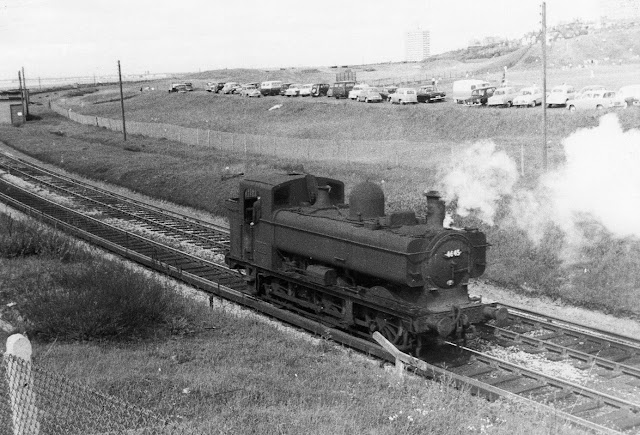We had to wear shorts in the “Fags” - known then as the
third form and described in Roman numerals as Form III. We might have had to wear
shorts throughout the fourth form as well [??]. By the lower fifth [LVs], which was our
third year at the school and now known as year nine, we were all in long
trousers. Here we are at Oswestry station, in full school uniform on a railway
society trip to Oswestry.
As is apparent in the photo, full school uniform included
caps, but I can’t remember at what stage they could be dispensed with. I do know
that mine was size eight and three-quarters, though I have no idea what was actually
being measured. Caps were an easy target for anyone who wanted to annoy you for
no obvious reason, so I probably had my hat removed without permission and
thrown into the nearest bush about once a day, on average. Caps had the school
badge on them, but only the blazer badge had an extra bit to note which house
you were in. I was in New Brighton house and I don’t think we ever won anything
[yet there were always plenty of things that were available to be won]. I’m not
sure how they sorted out houses. Although Brian - also in NB house - and I
lived in, or close to, New Brighton, I don’t think that Dave was in New
Brighton house, yet he lived closer to New Brighton than I did.
As colour combos go, I quite liked the school’s choice of
navy blue and gold for jumpers, ties and socks. I’ve no idea how long it had
been in existence. Unfortunately, John Dyer’s July 1961 picture of Peter
Mensforth alongside No. 5421 is monochrome. I’m not sure who else is visible.
Could it be John Duncan and Pete Lacey? Pete Mensforth lived in Cressingham
Road, New Brighton, and may well also have been in New Brighton house. I
visited him there once and he showed me his train set. I may have stayed for
tea, but it couldn’t have gone that well, because that was as far as our “out
of school” friendship went, fellow New Brighton house member, or not.

















































